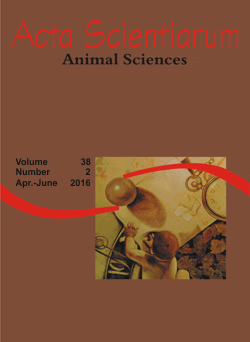<b>The quality of silage of different sorghum genotypes
Resumo
The objective was to select from among 24 sorghum genotypes the superior ones for silage production. The study was conducted in the experimental field of Embrapa Maize & Sorghum, in the municipality of Sete Lagoas, Minas Gerais State. It used 24 forage sorghum genotypes, 21 being hybrids from the crossing of grain sorghum females and forage males (12F38019, 12F38006, 12F40006, 12F40005, 12F40019, 12F37016, 12F37005, 12F37043, 12F39006, 12F39005, 12F39019, 12F38005, 12F38007, 12F37007, 12F39007, 12F40007, 12F38014, 12F37014, 12F39014, 12F40014 e 12F38009) and three witnesses: BRS 610, BRS 655 and Volumax. It estimated productivity per area, in vitro dry matter digestibility, and assessed the bromatological and fermentation characteristics of sorghum silage. In vitro dry matter digestibility, unavailable protein in neutral detergent, neutral detergent fiber corrected for ashes and protein, acid detergent fiber, hemicellulose and lignin differed as to the genotypes tested. The pH and the ammoniacal nitrogen of the silage also showed differences between genotypes. Most of the genotypes tested are favorable for silage production, except the hybrid with higher lignin content 12F370014, and the hybrids 12F37007 and 12F370014, which showed the highest NDFap values.
Downloads
DECLARAÇÃO DE ORIGINALIDADE E DIREITOS AUTORAIS
Declaro que o presente artigo é original, não tendo sido submetido à publicação em qualquer outro periódico nacional ou internacional, quer seja em parte ou em sua totalidade.
Os direitos autorais pertencem exclusivamente aos autores. Os direitos de licenciamento utilizados pelo periódico é a licença Creative Commons Attribution 4.0 (CC BY 4.0): são permitidos o compartilhamento (cópia e distribuição do material em qualqer meio ou formato) e adaptação (remix, transformação e criação de material a partir do conteúdo assim licenciado para quaisquer fins, inclusive comerciais.
Recomenda-se a leitura desse link para maiores informações sobre o tema: fornecimento de créditos e referências de forma correta, entre outros detalhes cruciais para uso adequado do material licenciado.








































